Containthe contagion by fighting hard against Covid-19 while at the same time not shutting down culture, and thus avoid humiliating museums, cinemas, and theaters with long closures that are harmful to both the public, the workers, and the institutions. The case of Spain shows that it can be done: in fact, Spain is the only one of the large European countries that during the second and third waves did not impose indiscriminate closures of cultural venues but, on the contrary, left everything open as much as possible, leaving it up to the Autonomous Communities (counterparts of our regions) to intervene surgically where necessary if things got bad. This approach balanced the needs to contain coronavirus contagion, and to avoid imposing a total lockdown on culture: and the results have been excellent, with Spain’s figures not deviating from those of the main European countries and, indeed, compared to some are even doing much better. A sign that, evidently, closing cultural venues has not had a significant impact on containing contagion and, conversely, leaving museums, theaters and cinemas open has not produced outbreaks.
There are places in Spain where cultural venues have never been closed since last summer. In Madrid, for example, where state museums and several local museums have never suffered even one day of closure due to the virus. And things, with the contagion, have not been so bad. “It calms us,” the vice-president of the Autonomous Community of Madrid, Ignacio Aguado, said in an official note, “to look after a few months and show that we made the correct decision to reopen the spaces of culture. A decision, on the other hand, endorsed by the responsibility shown by businesses, artists, the public and all those working in the sector, towards whom I want to express all my appreciation.” In Madrid, the Teatro Real was the only major opera house to never close during the pandemic. And since June 17, the Teatros del Canal de Madrid, the first major theaters to reopen to the public in Spain (as of last June 17), have hosted more than 100 performances welcoming more than 70,000 people, with no outbreaks among spectators, the Autonomous Community of Madrid reports. How was this possible and what actions were taken?
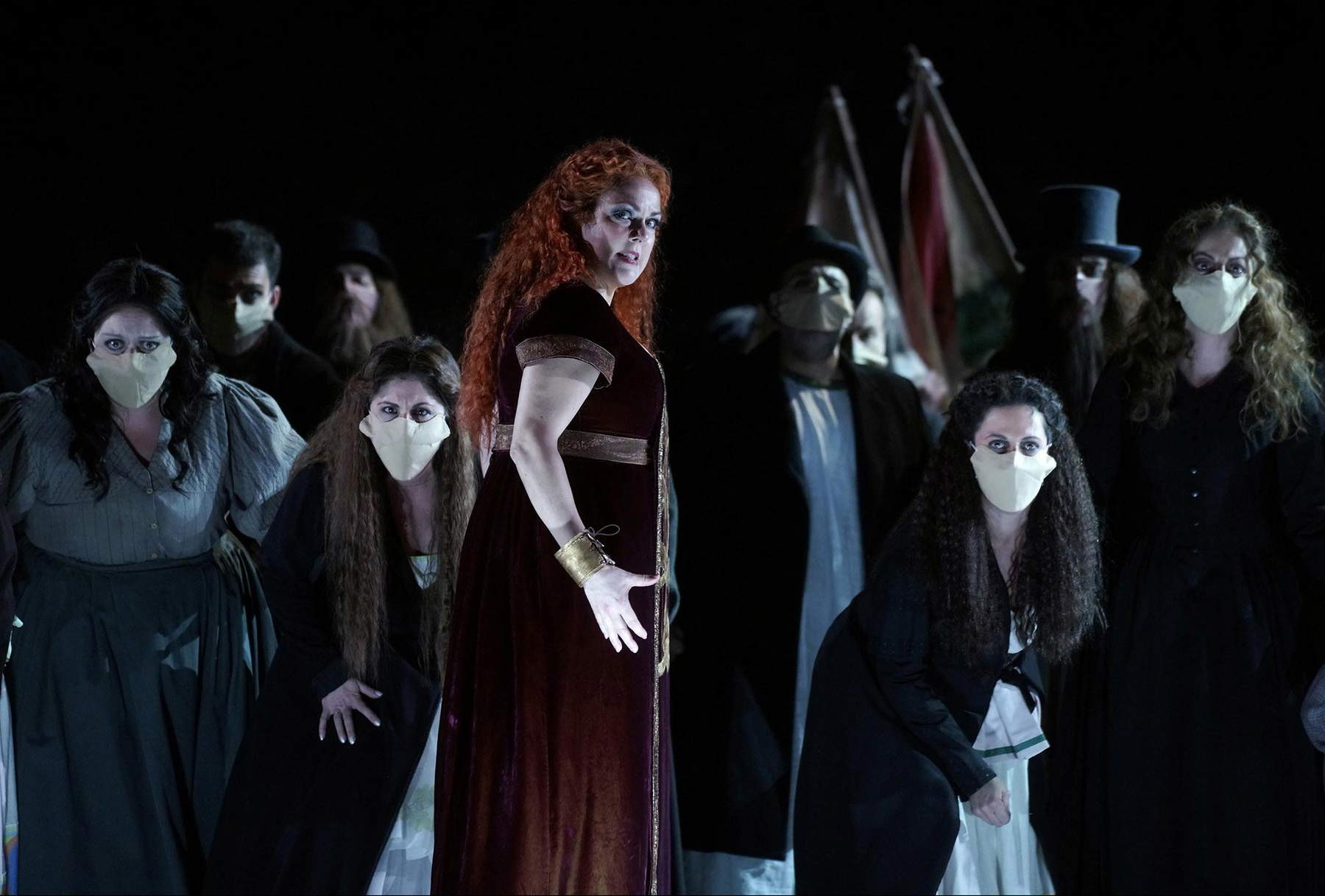 |
| A performance at Madrid’s Teatro Real in early March with masked actors. Ph. Javier del Real |
Spain has experienced two major waves since last summer. The first was unleashed in the fall and peaked on Oct. 27, when 23,122 daily cases were reached, and with hospital occupancy at its worst reaching an average of 28 percent of available beds. Italy also traveled above 20,000 daily cases during the same period, but in our country the peak had yet to be reached (40,902 cases in November). However, Spain experienced a third wave that was worse than ours, the prodromes of which were felt after the Christmas vacations: thus, at the end of January, the infections rose again (after a gradual reduction between November and December) to a new peak on January 15, with 39,529 daily cases (our third wave, on the other hand, peaked on March 12 with 26,824 cases). The response during the third wave was different in the various Autonomous Communities: in Spain, in fact, local authorities have wider margins of autonomy than in Italy, and measures in response to the virus are decided by individual Communities within a framework established by the central government. Thus, there have been Autonomous Communities that have closed bars and restaurants completely but also others that have left them open, still others that have suspended school in attendance where in other Communities it remained open, and so on.
The newspaper El Correo, on January 14 (thus the day before the peak of the third wave, on whose reasons experts are divided: some attributed it to the general Christmas relaxation, since Spain was one of the few European countries that did not tighten measures during the vacations, because, on the contrary, it eased them, and others who instead called into question the English variant) summarized with several mirrors the various measures taken. In Navarre, for example, bars and restaurants open but only until 9 p.m., malls and stores open but with capacity reduced to 30 percent of normal, outdoor smoking ban, 11 p.m. to 6 a.m. curfew. In the Community of La Rioja, total lockdowns were ordered in three cities (Logroño, Lardero, and Villamediana), while in the rest of the territory the curfew was imposed from 10 p.m. to 6 a.m., for activities considered non-essential, a 5 p.m. closing time was established, and only self-confinement was recommended for citizens, particularly the over-65s. The Community of Castile and León was among those that implemented the most restrictive measures: bars and restaurants closed (except for take-out), gyms closed, visits to hospitals limited to one person. Tough measures in Extremadura as well: closed all activities (restaurants, bars, stores but also cultural activities) in all towns with more than 5,000 inhabitants, curfews from 10 p.m. to 6 a.m., and widespread municipal lockdowns. The case of the Balearic Islands is interesting, where the closure of gyms, shopping centers and restaurants was ordered (although only in the islands of Mallorca and Ibiza), but not culture, for which the Autonomous Community imposed only a maximum capacity of 30 percent.
In essence, measures in much of the country were comparable to those in our yellow zones (and were even perceived as strict), and in some cases were even milder (for museums, for example, Italy decreed a total lockout on weekends, and Spain did not). And now, Spain has also put the third wave behind it: cases of infection in recent days stand at around 3-4,000 daily, and the incidence is low in almost the entire country. The figure of infections per 100,000 inhabitants over seven days calculated by comarca (a territorial unit comparable to our province) peaks in the week of March 18-24 in the comarca of Araba-Álava (107.68) followed by Navarra (100.88), Lleida (94.50), Almería (87.75) and Madrid (87.70). The best-off comarche are Albacete (3.86), Alicante (5.70) and Castellón (7.93), the only ones under 10 cases per 100,000 inhabitants. To give an idea, today, March 29, in Italy the provinces put in the best position are Trapani and South Sardinia (both with 46 cases per 100,000 inhabitants), followed by Isernia (51), Messina (77), Oristano (78), Sassri (83), and Reggio Calabria (85), immediately followed by provinces such as Catania (95), Campobasso (97) and Pescara (110), which while being among the Italian provinces where the situation is best have rates similar to those of the Spanish comarches put in the worst position. The highest rates in Italy are in Cuneo (457), Udine (439) and Prato (431). Data from Spain can be accessed through very simple and intuitive graphs and tables on the National Center for Epidemiology’s dedicated Covid website.
 |
| Second and third waves, comparison on the number of daily infections per million inhabitants average 7 days, Spain vs. Italy |
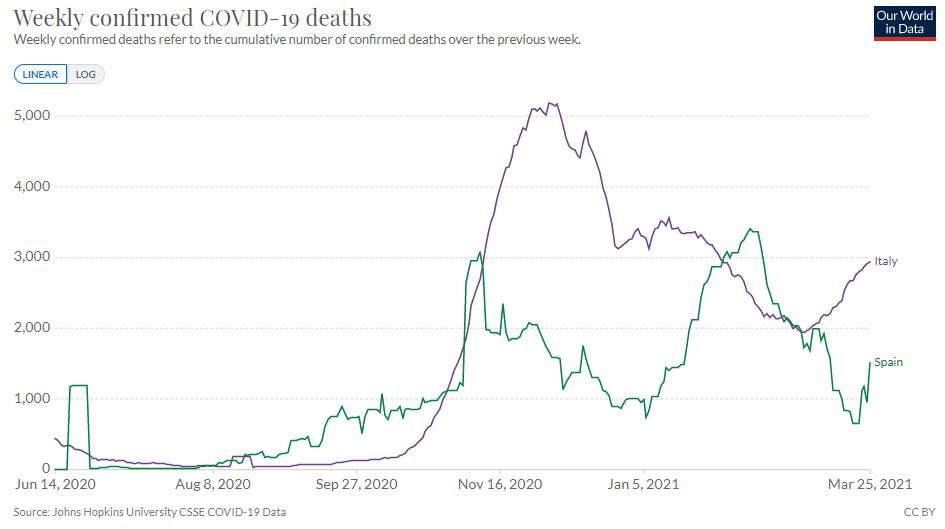 |
| Second and third waves, comparison on the number of daily deaths per mil. of inhabitants Spain vs. Italy |
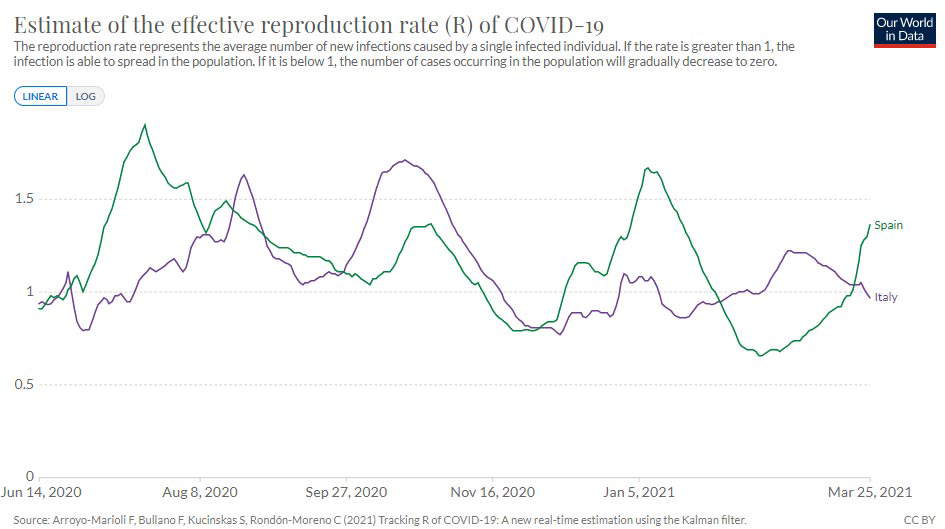 |
| Second and third waves, RT index, Spain vs. Italy |
Despite the fact that Spain was hit by two particularly major waves, which in some areas of the country almost blew up hospitals, the culture was almost always open: the only closures were surgical and were arranged on a local basis where the situation was getting much worse, but the tendency was to keep as many open as possible if the situation allowed. The approach, in short, was completely different than in Italy. On the contrary: in Spain, it was the Ministry of Culture and Sports that incentivized Spaniards to go to the museum or theater. In fact, in mid-October, the ministry launched a social campaign, called La cultura es seg ura (“Culture is safe”: launch video here), urging people to attend cultural venues. With the campaign, Spanish Culture Minister José Manuel Rodríguez Uribes declared on Oct. 13, the country intended to show that there can be a compromise between reasons to contain contagion and reasons for culture. The idea was to “make progress in the work of public awareness,” the minister said, “as well as support and give visibility to the great work done in all areas of culture in the application of health regulations, allowing the public to return to live culture.” The pandemic, Rodríguez Uribes further said, “has taught us that culture is a commodity of first necessity that needs to be protected in order for it to withstand any crisis.”
Five months later, Spain says it is satisfied with how the campaign went. Indeed: three MEPs from Spain, Ibán García Del Blanco, Marcos Ros Sempere and Domènec Ruiz Devesa, want to point to it as a model for Europe to follow. On January 27, as the third Spanish wave began to subside, the three parliamentarians submitted a question reporting that "considering that the culture and creativity sectors are among the most severely affected by the pandemic, the Spanish government launched the La cultura es segura #culturasegura (Culture is safe) campaign to support culture. The Spanish experience shows that theaters and halls are not places of contagion because they comply with protocols. It also shows that the campaign provides relief to theaters and halls, as well as their audiences, in these exceptionally difficult times. Will the Commission draft guidelines on an agreed vision of what culture is, along with guidelines to support culture and the culture and creativity sectors?"
And there is satisfaction among insiders as well. "The La cultura es segura campaign," María López Insausti, president of the Asociación Aragón Escena, told the Europa Press news agency on World Theater Day, “has been fundamental in allowing theaters to stay open. We are the only country that has kept theaters open, and not because we have more fun in Spain, but because we have done an exercise of responsibility, to define, choose and establish the protocols necessary to make theater activities safe.” The public, said López Insausti, “has cooperated, has been supportive of the sector, and we have noticed this especially since January, when the maximum capacity of 50 percent was established, although we hope that as soon as possible we can get to 75 percent capacity.”
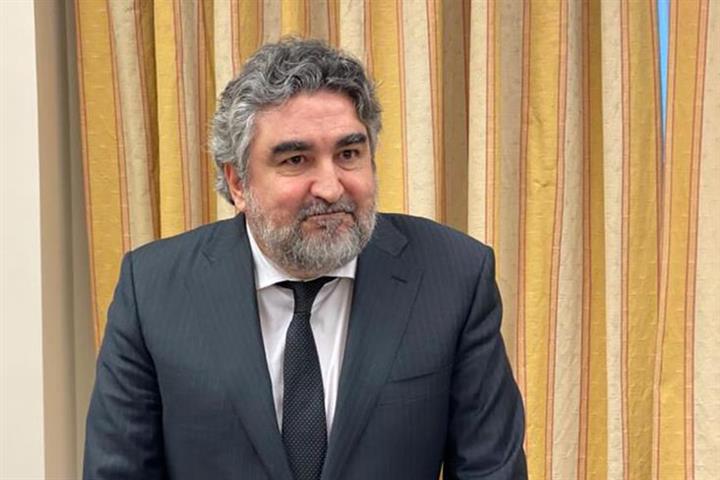 |
| Culture Minister José Manuel Rodríguez Uribes |
 |
| The presentation of the La cultura es seguracampaign |
 |
| A still from the video launching the La cultura es seguracampaign |
Last February 12, as Spain was coming out of the third wave, Finestre Sull’Arte devoted a lengthy in-depth article on Spanish museums, reporting on the statements of three institutions (two large ones, namely the Prado and the Thyssen-Bornemisza, and one medium one, the Museo de Cáceres in Extremadura, an Autonomous Community much affected in the third wave). The idea was to never close, except in exceptional cases (as with the Museo de Cáceres, closed due to the epidemiological situation in Extremadura), because museums contribute to the well-being of the population. “The Ministry of Culture and the museums,” Carlos Chaguaceda, director of communications at the Prado in Madrid, explained to us, “believe that, in this difficult situation, staying open is a sign of hope, of normality, a way of offering an escape route, an opportunity for reflection and escape for citizens, who have very limited options for movement. Staying open despite the difficulties is also an opportunity to reclaim the role of culture. Our contribution to the well-being of all is the possibility of offering citizens a place where beauty and art take priority.” And the director of the Thyssen-Bornemisza, Evelio Acevedo, affirmed the same: “It has been proven that museums are not places at risk, and we have safeguarded the possibility of continuing to fulfill our mission with regard to all our audiences, both those in attendance and those arriving through our digital offerings. In addition, cultural activity brings, psychologically, a salutary effect among people in times of crisis.”
Disruptions for the museums that had to close were limited, however. The Museum of Cáceres, closed on January 21, was able to reopen just on February 12, and as of that date it also opened an exhibition. Paradoxically, Madrid’s state museums were closed over the weekend of Jan. 8, but not because of Covid, but because of the weather alert (Spain had been hit by a severe cold wave in those days that brought snow to several parts of the country, including the capital). At the moment, however, museums are experiencing major declines in audiences, partly because they are visited only by citizens and not by tourists, although in any case Spain has been welcoming international tourists again for a few days now (however, with a lot of controversy, including internal controversy: there are political parties that accuse the government and the Autonomous Community of Madrid of encouraging what is called "turismo de borrachera," or the tourism of young people who arrive from abroad, especially from France, with the sole purpose of partying and getting drunk, because in recent days there have indeed been situations that are very much on the edge).
The trend is to consider museums as safe places. “We are safe spaces, cultural spaces are safe by definition,” José María Luna, director of the entity that runs the Picasso House in Málaga, one of the country’s most visited museums, said in an interview yesterday, suffering greatly from declining visitation due to the absence of tourists. “Habits, norms of behavior in a place of culture already predispose to a better capacity for prevention. Art heals, and that’s not a phrase I make up. Art is not a medicine, but it heals. Culture in general heals on a mental level. The Romans already said it, mens sana in corpore sano. Culture has helped anchor us in reality and help us escape from the ugly part of this reality, that’s what reading, painting, music, movies have always done.” Luna finally called the year 2020 a “parenthesis,” and hopes that 2021 can be the closing of the parenthesis. And that is what everyone is hoping for.
 |
| The King of Spain, Philip IV, the President of Portugal, Marcelo Rebelo de Sousa, and the director of the Prado Museum, Miguel Falomir, visit the museum on July 20 more than a month after the reopening |
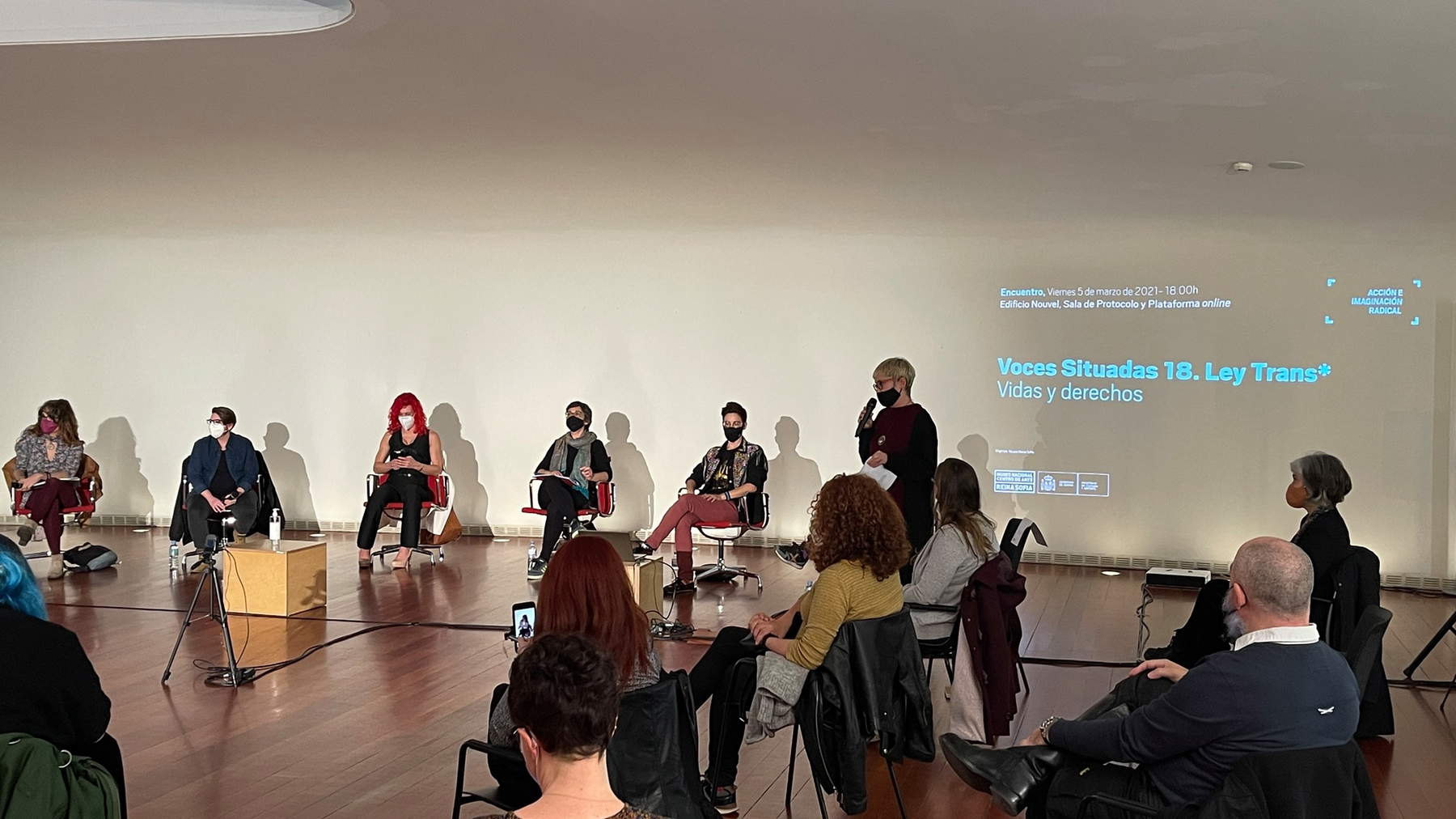 |
| A meeting at the Reina Sofía Museum in Madrid last March 5 |
 |
| Visitors to the Museu Nacional d’Art de Catalunya |
On March 27, theaters celebrated World Theater Day. In Italy, it was the second in a row with theaters closed. In Spain, no: open theaters. “We are a privileged country,” actor Josep María Pou told CatalunyaPress. “With all the limitations on capacity and health precautions, we have managed to keep theaters open, which is not the case in other countries.” Pou gave the example of Madrid’s Teatro Real and Barcelona’s Liceo, among the very few theaters in the world that have continued with their opera programs. “We should be happy that we have succeeded,” Pou said. Theater operators are almost all in agreement, and on World Day, many let it be known that there was indeed much to celebrate in Spain, as theaters are closed everywhere. “We have to be optimistic,” Joan Matabosch, artistic director of Madrid’s Teatro Real, told Noticias de Navarra. “We have reason to be, taking into account what is happening. In Spain, the theater has managed to resist and is recovering some normality, with the obvious limitations in capacity to ensure security.”
“It has been shown,” Matabosch added, “that it was not imperative to cancel activities to ensure security. And keeping theaters open while ensuring full security is very complicated, but not impossible.” The recipe is the same as in other countries that have attempted reopenings in the summer: spacing, mandatory masks, hand sanitizing, sanitizing the premises, in some cases mandatory reservations. Not everyone is happy, however: for example, the director of the Teatro Principal in Zamora, Daniel Pérez, spoke of a disaster, which the reopenings have only partially remedied. And from the pages of the daily El Confidencial, the president of the Red Española de Teatros, Carlos Morán, says that the culture sector is one that would not receive enough subsidies from the government.
The Autonomous Community of Madrid has tried to prove, data in hand, that culture is safe. From June 17 through January, 3,876 cultural events were held in the capital’s Community, and there was no outbreak of Covid-19 associated with any of these events. The Community attributes the result to the security measures put in place at the cultural venues, and to the responsibility of the exhibitors, workers and the public who respected and enforced them.
 |
| A performance at the Liceu in Barcelona last Feb. 27. Ph. Antoni Bofill |
 |
| Audience at the Olympia Theater in Valencia on December 9. |
Cinemas, which, as in Italy, are much more popular with the population than museums and theaters, are consequently also the sector that has suffered the most, although there has never been a total closure as in our country (in Italy, cinemas have not reopened since the end of October), and even at the peak times of the two waves, many Spanish cinemas have continued to work. In early February, in the waning phase of the third wave, the newspaper La Vanguardia reported, reporting data compiled by the consulting firm Comscore, that 39 percent of cinemas in the country were open. Many chains, even though they could open, still preferred to keep their doors closed because it was sometimes cheaper than keeping open with only 50 percent of capacity. And the results have not been exciting: in Catalonia, for example, there have been declines of 80-90% compared to the same period in 2020 (remember that February 2020 was still in full swing). “There is a very loyal audience,” said Pilar Sierra, director general of the Gremi d’Empresaris de Cinemes de Catalunya, an association that brings together companies in the sector, “who continue to come to the cinema every week. People are very quiet and take advantage of the opportunity because theaters are safe places.” The audience is that of aficionados, in short: for recovery, however, everyone is trusting in the summer.
The signs, however, are encouraging: last week, the Federación de Cines de España (FECE), estimated that 80 percent of cinemas will be open for Holy Week, and that is the highest rate of opening since last January 1. And exhibitors, in order to convince audiences to go to the cinema, keep reminding them that, in the ten months of the pandemic, no outbreaks have been recorded in Spanish cinemas, reasoning that going to see a movie at the cinema is one of the choices considered safer for one’s leisure time. This is also thanks to safety protocols that have accustomed Spaniards to physical distancing, mandatory use of masks, hand sanitization, and so on. In addition, there is a compulsory reservation regime in cinemas. However, Spaniards are returning to the cinema: again the FECE reported that last weekend, Father’s Day weekend, total box office in the country exceeded one million euros. Numbers that will be difficult to replicate in Holy Week because the Autonomous Communities have tightened some of the restrictions, but nevertheless in almost all of the country it will be possible to go to the cinema.
In short, Spain has proven that it is possible to live in pandemic without giving up culture. And now the country is preparing to spend Holy Week trying to minimize risks, so much so that, with the traditional increase in mobility on Easter days, the Autonomous Communities have decided to tighten security measures. Nothing, however, to do with what happens in Italy, where we will all be in the red zone at Easter: in Spain the measures for Easter are even softer than in our yellow zone, and despite this there are opposition politicians who even say they are too strict and that the government is making sure to tighten them. There are some cases of localized lockdowns (for example, in Andalusia, where 26 municipalities record an incidence of more than 500 cases per 100,000 inhabitants over the 14 days), although they are rather mild: for example, catering closes only if the threshold of 1,000 cases per 100,000 inhabitants over the 14 days is exceeded. In the rest of the Community, restaurants open until 10:30 p.m. in major cities such as Seville, Cordoba, Jaén, Malaga, and Huelva, curfew from 11 p.m. to 6 a.m., stores open until 10:30 p.m.
Again, in Cantabria, bars and restaurants open until 10:30 p.m., curfew from 11 p.m. to 6 a.m., and, as in almost all other Autonomous Communities, bans on entering and leaving regional territory. In the Community of Castile and Leon, restaurants open until 11 p.m. (last entry at 10 p.m.), shopping centers open with capacity reduced to one-third of normal. In Extremadura, no hourly limits on dining: only capacity limits. Culture, on the other hand, is open virtually everywhere.
In a situation that allows it to look to the future with confidence, Spain can also afford to experiment. Last Saturday, at the Palau de Sant Jordi in Barcelona, the first post-Covid concert without spacing was held: a concert by Spanish rock band Love of Lesbian attended by 5,000 spectators, all wearing mandatory FFP2 masks. The concert was attended by a team of doctors from the Germans Trias i Pujol Hospital in Barcelona, who subjected all attendees to an antigen test, and who intend to analyze the concert as a case study.
There was, however, a lot of controversy before the event: fingers were pointed at the rapid tests, which were considered unreliable, at the appropriateness of organizing a concert without distancing at a time like the present, and so on. But the goal of the organizers is still to prove that the concerts are still safe. The concert has been covered by newspapers around the world: and now outside Spain there is great attention to see how it went.
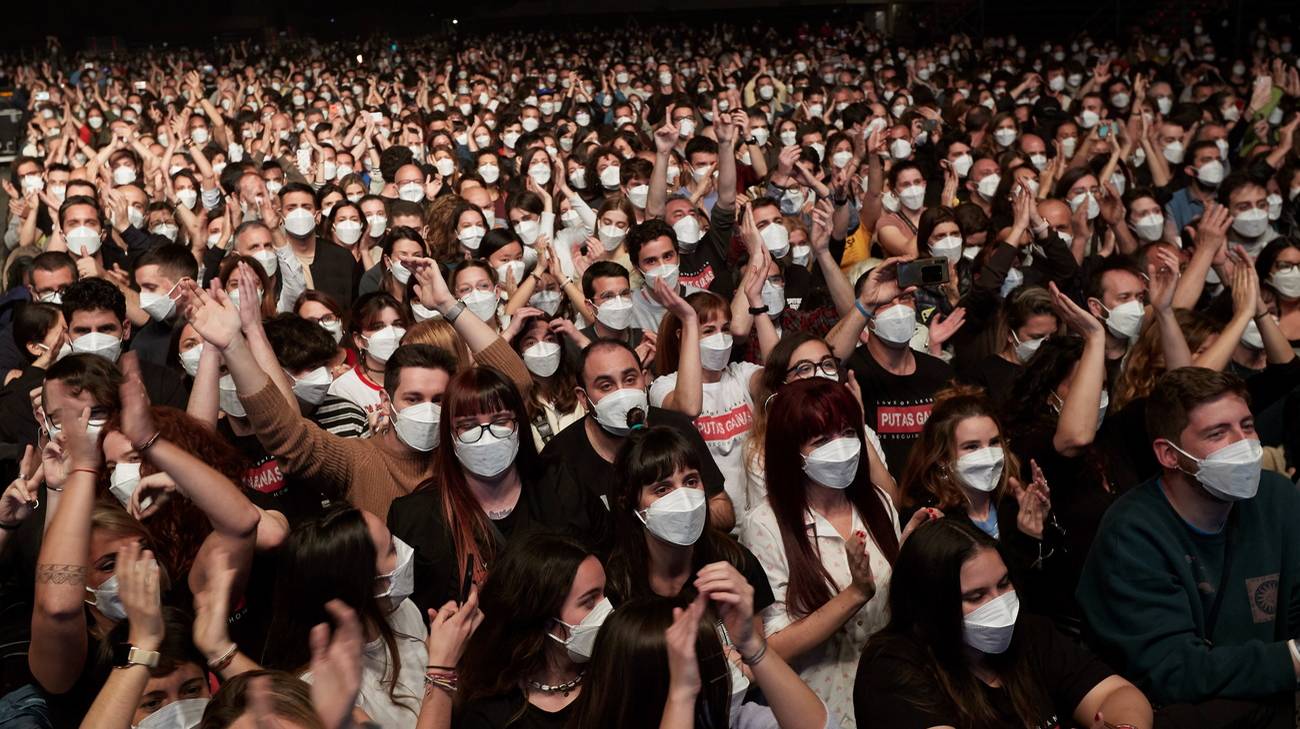 |
| Audience at the Love of Lesbian concert on March 27, 2021 |
Warning: the translation into English of the original Italian article was created using automatic tools. We undertake to review all articles, but we do not guarantee the total absence of inaccuracies in the translation due to the program. You can find the original by clicking on the ITA button. If you find any mistake,please contact us.